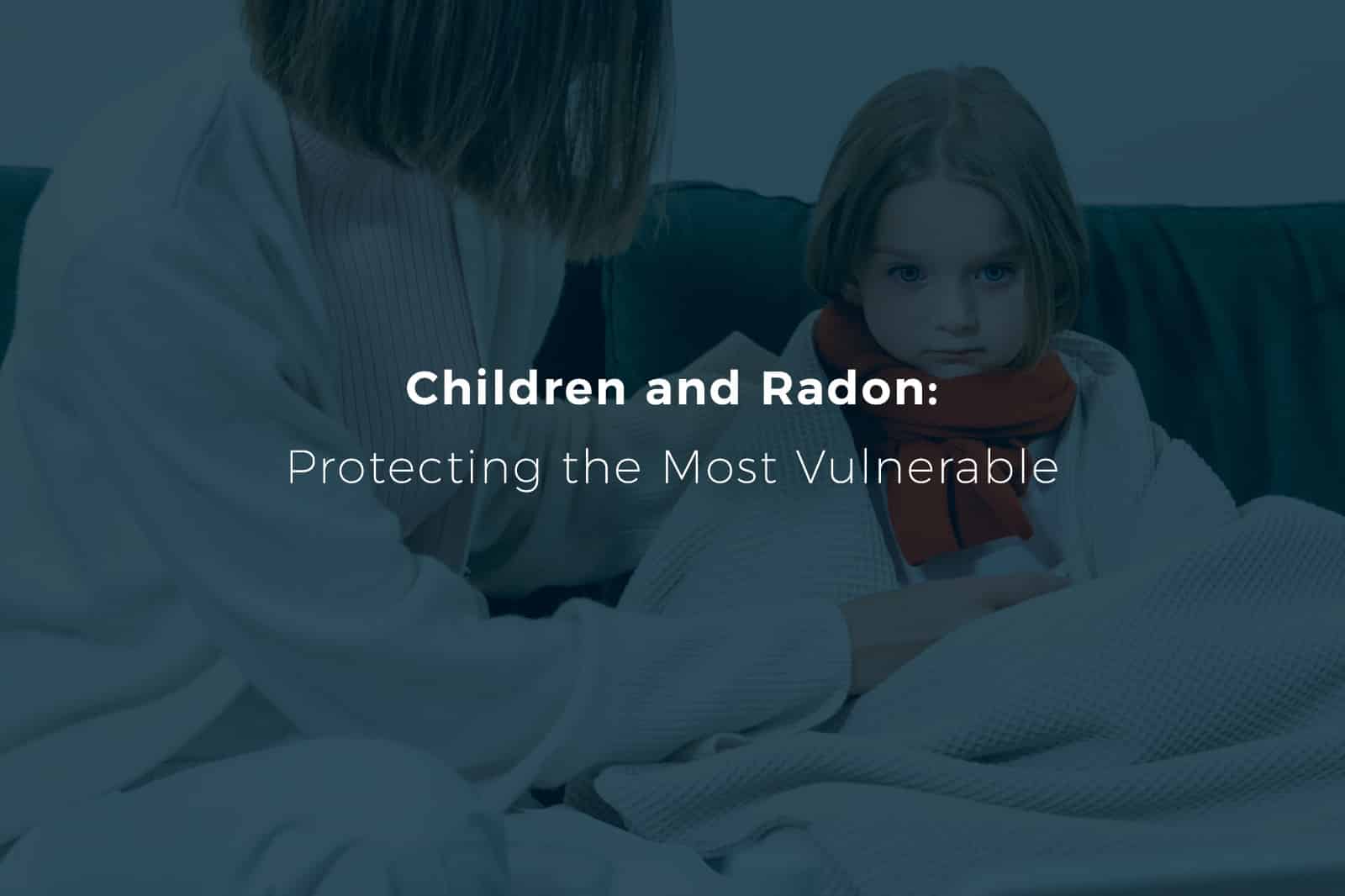
Today on the blog, we’re going to talk about something that might be right under our noses—literally. It’s called radon gas, and it’s a natural part of the very ground we walk on. But when it seeps into our homes, it can pose a risk that’s particularly concerning for our youngest residents. So, let’s dive into the world of radon and discover why it matters, especially for family homes filled with the energy of children.
The Lowdown on Radon
Radon gas emerges from the natural breakdown of uranium in soil, rock, and water. It enters our homes through openings in the foundation, becoming trapped and potentially rising to harmful levels. It’s also completely invisible, with no scent to warn us of its presence.
This means it’s possible to be exposed to radon for an extended period of time, which can lead to increased risks of lung cancer. According to the EPA, radon is responsible for about 21,000 lung cancer deaths every year in the United States. Radon is also the leading cause of lung cancer among non-smokers, and its effects on children are particularly concerning.
Why Kids Are More Susceptible
Children are active, lively, and quick—and so are their respiratory systems. They breathe in faster and deeper, drawing in more of whatever’s in their environment. That means a greater intake of radon in proportion to their body size compared to adults.
Additionally, their cells are dividing and growing at a rapid clip, making them more vulnerable to the disruptive effects of radon’s radiation. Long story short: the radon they breathe in now can lead to serious health issues down the line.
Testing: The First Line of Defense
The only way to know if radon is an unwelcome guest in your home is to test for it. Testing kits come in short-term and long-term varieties, and using them is fairly easy. Simply place the test in the lowest level of your home where you spend time, follow the instructions, and send it off to see what you’re dealing with. It’s a step that’s too important to skip, especially when little lungs are at stake.
Better yet, you can have an environmental testing company — like Adviro — conduct the radon tests for you. The benefit of having a professional radon expert conducting the test is that you can relax knowing that your testing was done correctly. Not to mention, you’ll save time from having to do all the work yourself.
When the Numbers Come In
So the testing’s now done and the results are in hand—what now? If your radon levels are above the EPA’s recommended action level of 4 pCi/L, it’s time to take steps.
But don’t worry, there are things you can do to reduce radon levels, some of which are pretty straightforward:
• Keep it airy: Open those windows to let radon out and fresh air in.
• Seal the deal: Cracks in the walls? Seal them up to stop more radon from coming in.
• Barriers are good: In crawl spaces, lay down plastic sheeting to keep radon at bay.
• Vent it out: You can install a vent pipe, which helps radon escape safely from your home.
But remember, if these actions don’t bring down the radon, it’s time to call in the pros. They have specialized mitigation strategies that are incredibly effective.
Spread the Word Helps Children More
Awareness is crucial when it comes to radon. We all need to talk about it—not just in this article, but in schools, at community events, and even around the dinner table. When more people understand what radon is and the impact it can have—especially on children—we all become better equipped to deal with it.
Here are some conversation starters:
• Buying a family home? Radon should be on your checklist of things to check before sealing the deal.
• Building new? Make sure to incorporate radon-resistant construction techniques.
• Got a platform? Use it to advocate for required radon testing in schools and daycare centers.
The Bigger Picture: A Safer Environment
Creating a safe environment for our kids doesn’t stop at our front door. We need to think about where they learn and play. Pushing for policy changes that make radon testing and mitigation a standard practice in schools and childcare facilities is a powerful step in the right direction.
In Conclusion: The Take-Home Message
At the end of the day, ensuring that our homes are free of high radon levels is a key part of keeping our families healthy. While the prospect of dealing with radon might seem daunting, remember that it often starts with simple, doable steps. Testing is easy, and reducing radon levels can be straightforward with the right knowledge and actions.
We owe it to the little ones who look up to us to provide a safe space for them to grow and thrive. And it’s not just about the now—it’s about their future health. By taking action on radon, we’re not just being responsible homeowners; we’re being proactive protectors of our family’s well-being. So let’s get testing, sealing, ventilating, and talking. Here’s to healthy homes and even healthier families.

Recent Comments